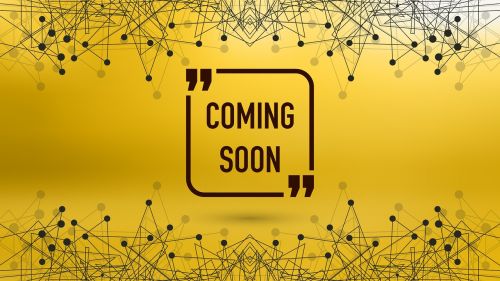ConTech in a post lockdown, pre-vaccine economy
Contents |
[edit] Introduction
In 2017, McKinsey Global Institute slated construction for evolving at a ‘glacial pace’ due to its ranking as the least-digitised industry in Europe. While plenty of technological advances were pitted as ‘on the horizon’, many companies were reluctant to take the necessary steps to push forward with digitisation. Critics warned that a lack of innovation would lead to companies folding, although it took a global pandemic in 2020 before this prophecy materialised, and those without suitable digital infrastructure in place were shaken.
The pandemic is being considered a catalyst for industry improvement, propelling construction out of its ‘glacial’ evolution and deep into the digitised era. A recent study undertaken by Procore found that two thirds of the surveyed construction companies had rolled out new technology during the lockdown, with 94% of these seeing an improvement to productivity and teamwork. However, what exactly are these technologies and where do we go from here?
[edit] Smart buildings
While we are all now experts in the world of Zoom and Microsoft Teams, the challenge lies in returning safely to offices and various other workspaces. With many UK companies pushing for their teams to be back in work physically, how do we ensure that commercial buildings remain safe?
Smart building technology is reshaping the workplace and ensuring safety as well as energy optimisation. Buildings with integrated building management systems (BMS) systems and IoT (Internet of Things) sensors were already an option before the pandemic. Now, they are a wise choice for business owners.
Essential for a post-pandemic and pre-vaccine era, IoT systems can control air quality and ventilation. High-performance air filters and moisture controls will now be key, due to Covid-19’s airborne nature. OKTO Technologies (smart buildings specialists) have even launched an artificial intelligence (AI)-led air filtration solution that is reportedly so advanced it can eliminate 99.98% of SARS-CoV-2 (the virus that causes Covid-19) from the air in 10 minutes.
Similarly, density control counters and heat detection cameras can be incorporated into BMS systems to ensure that viruses are less likely to spread or enter into a facility. Airports have been trialling infrared cameras to measure body temperatures for a fever and several companies offer leases or installations for these cameras. While they are not a definitive medical diagnosis, they add a level of reassurance. This may be the aim of much of this technology; a form of due diligence in protecting staff.
[edit] BIM and virtual reality
Technological advances are also prominent on site. Construction News reported that contractors employed for the Nightingale Hospital projects found huge value in Autodesk programmes. A vital tool for tracking constant streams of updates in rapid working conditions, construction management software proved its worth in recognisably challenging projects across the UK.
As social distancing measures remain in place, it is imperative that technology is prioritised; virtual communication is still far safer than face-to-face. Software like BIM is also providing insights and tools to manage projects during a more challenging time. Even more impressively, companies are merging BIM models with the cloud, GPS and virtual reality (VR) software. This development means a ‘digital twin’ of a facility can be created, and it opens a world of opportunities for project management and design efficiency.
[edit] Remote work
Remote working could even be a trend that stays long past pandemic precautions. Drones have been used previously to reduce safety hazards for technicians and now may be utilised in future remote inspections. Similarly, researchers at the University of Strathclyde have been given £35,000 in funding to create a remote inspection system. The 3D immersive building environment program aims to reduce risks by eradicating the need for quantity surveyors or health and safety inspectors to be physically present on site.
Whether enabling remote working, improving the health and safety of commercial buildings or aiding on-site processes, technology has become a necessary tool for construction in the last 6 months. The companies that had embraced digitisation long before 2020 were undoubtedly the ones able to continue thriving in the tough lockdown period. The next step is for many companies is to streamline their management processes or workplace systems to ensure technology works for them as efficiently as possible. Breaking out of its inertia, construction’s ‘glacial evolution’ is firmly in the past and technological advances are here to stay.
This article originally appeared under the title, "Shift in Construction Technology for a ‘post-Covid, pre-vaccine’ era" on the BSRIA website. It was written by Amy Butler, JB Associates and published on 3 September 2020.
--BSRIA
[edit] Related articles on Designing Buildings Wiki
- Adapting your technology to the new working normal.
- Artificial intelligence.
- BSRIA articles on Designing Buildings Wiki.
- Building information modelling BIM.
- Building management systems BMS.
- Construction innovation.
- Construction is an industry ripe for tech disruption.
- ConTech.
- Coronavirus and the construction industry.
- Digital transformation - overcoming barriers.
- How technology can support social distancing.
- Internet of things IoT.
- Proximity warning systems.
- Smart buildings.
- Social distancing on construction sites.
- Virtual reality in construction.
- Wearable technology.
[edit] External resources
BIM Directory
[edit] Building Information Modelling (BIM)
[edit] Information Requirements
Employer's Information Requirements (EIR)
Organisational Information Requirements (OIR)
Asset Information Requirements (AIR)
[edit] Information Models
Project Information Model (PIM)
[edit] Collaborative Practices
Industry Foundation Classes (IFC)







